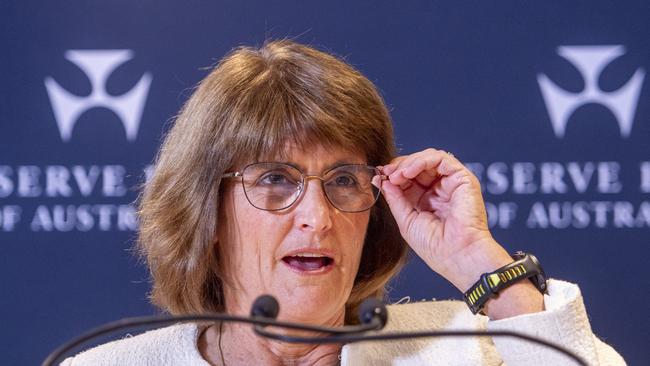
The lack of certainty going into the meeting, the central bank’s first of the year, won’t simply be because policymakers know their decision could play a role in deciding the outcome of the nation’s fast-approaching federal election. Other factors are in play.
For one, there’s the risk of an embarrassing policy error the central bank, still bruised from past perceived failures, will want to avoid.
It’s hard to recall a recent meeting with more riding on it, with the decision set to shape the future health of the economy and the reputation of the RBA.
Current money market pricing puts the probability of a cut in the official cash rate on Tuesday at more than 90 per cent.
Most economists, including those at Australia’s big four banks, are forecasting the RBA will deliver its first rate reduction since 2020, bringing it in line with global counterparts.
That confidence stems from the last batch of inflation data showing core inflation in a nose dive, which should see it land back within the RBA’s 2-3 per cent target band relatively soon.
It’s likely the RBA’s governor, Michele Bullock, has welcomed the inflation print effusively, allowing herself a moment to celebrate the nearing end of the tough three-year battle to tame rampant price pressures.
Still, there will be lingering doubts about whether now is the time to pull the policy trigger.
Australia’s job market is surprisingly strong, with unemployment at historic lows of about 4 per cent. The jobless rate hasn’t risen in recent months as many assumed it would, and there’s evidence that consumer spending picked up over the final three months of last year. High levels of employment, plus income-tax cuts, strong government spending and subsidies to offset rising electricity costs are giving consumers a boost.
The danger for the RBA is that lowering the official cash rate now might prove premature.
Core inflation, fed by rising services costs, is still above the target band, albeit slightly, and the central bank knows the final battles of wars on inflation are the hardest to win.
If it’s not yet time to declare victory over inflation, it might not yet be time to cut.
There’s a risk that starting cuts now could fuel even more spending by consumers, with the Labor government fighting to claw back voter support recent polls suggest is ebbing.
And while it looks as if the economy can have an unemployment rate of about 4 per cent without inflation heating up, it’s unlikely the RBA is prepared to buy into that idea just yet.
The central bank has so far stuck with its view that the so-called non-accelerating inflation rate of unemployment — the lowest level of unemployment which can be sustained without causing wage and inflation growth — is still closer to 4.5 per cent.
If that’s the case, a decision to cut interest rates now would be angst-filled for some of the key decision-makers at the RBA.
The non-accelerating inflation rate of unemployment, which the RBA uses to gauge spare capacity in the economy, isn’t a decisive factor. But, if inflation does burn hot again in the coming quarters, the finger of blame will again be pointed at the central bank for not going with its gut on the labour market.
The political backdrop accompanying the rate decision could also keep the RBA’s nine board members on edge. Though they will attempt to put the coming election, due by mid-May, out of their minds, they are human after all.
If the board elects to cut, certain corners of the media and the public will doubtless claim it was acting politically. A failure to cut will trigger a similar response, but from different sources.
The RBA is damned either way on that score.
All said, on balance, a cut is more likely than a hold. But, the RBA will need every minute of its two-day policy meeting to arrive at that conclusion.
The Wall Street Journal






If money market pricing is to be believed, an interest rate cut by the Reserve Bank next week is nearly a done deal. The reality is the discussion around the RBA table will be tense, uneasy, and far more finely balanced than most understand.